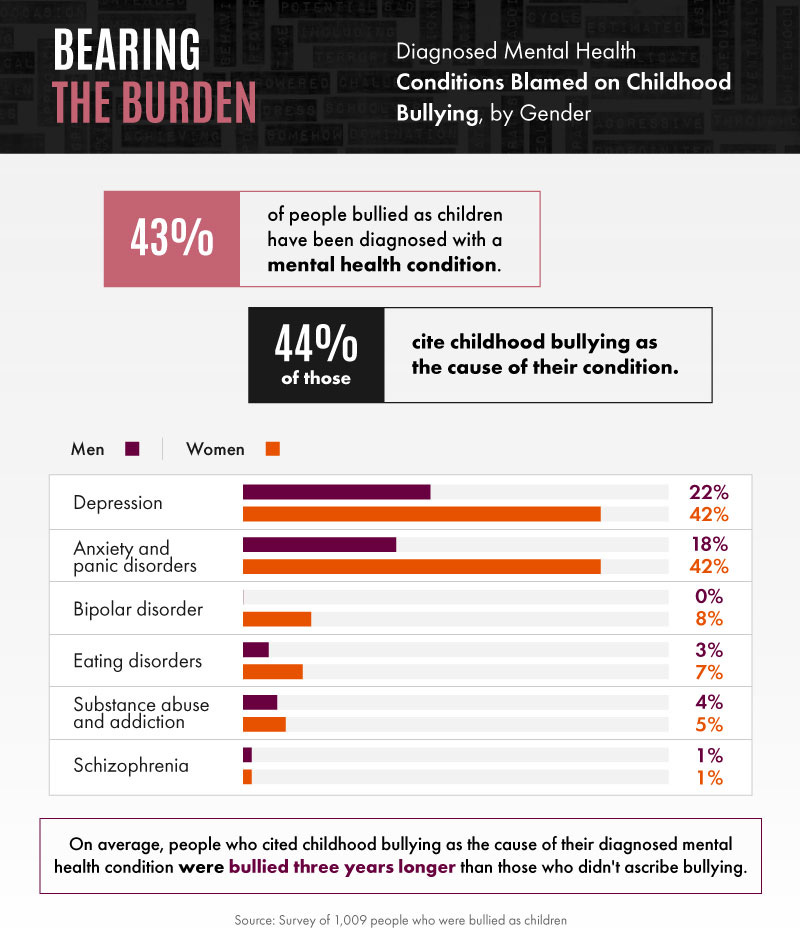Every school year is a fresh start and healthy friendships are always a priority for children, teachers and parents. However, there are certain characters who have the ability to blow a hole in that ideal - bullies. No parent wants their child to be one or to be a victim of one.
Bully: a person who habitually seeks to harm or intimidate those whom they perceive as vulnerable.
Unfortunately, the term bully is overused and doesn’t only mean someone who teases, pokes fun or is even physical in the playground. Their behaviour is thought out, targeted, sneaky and is often used to gain social status. Bullies are highly intelligent social and emotional manipulators, making them much harder to spot; they know exactly how to avoid getting in and out of trouble.
Why bully?
Humans have evolved to compete socially, and in the same way that the extroverted class clown and the compassionate introvert have different skills in which to do this, so do bullies. The misconception that bullies are tortured souls lashing out due to some sort of insecurity means that while we crack down on traditional teasing, the bullies pulling strings in the background often go unnoticed.
Unfortunately, bullying is an effective social strategy for some and involves targeting victims lower in their contextual hierarchy to gain something that they want, whether it’s resources, toys, or most commonly, status within their social group.
Inside the brain of a bully
No one is born a bully, but there are certain ingredients necessary to bake that pie: low levels of honesty; high self-esteem; extroversion; disagreeableness; charisma; intelligence and social mastery, which can be accentuated by a wealthy/powerful background. They are happy to deceive, manipulate and use others with little care for what anyone thinks. Even when they are caught out, the charm offensive is deployed to manipulate to get out of whatever mix-up they are somehow involved in…again.
A bully will pick their target carefully by analysing for weaknesses like physical inferiority, social isolation, age or emotional weakness and attack the aspect which will hurt their victim the most. This method enhances their social standing, so the behaviour will nearly always be performative in front of others, to signal what they are capable of doing, convincing peers to fall in line. Bullies can be observed everywhere in society and even though it can be an effective short-term strategy, their selfishness isn’t usually successful long-term.
Beating the bullies
Perceived physical toughness is a significant approach to avoiding victimisation, especially with boys. Bullies are too analytical to risk the embarrassment of losing a physical altercation, and will happily pivot and move on to someone else. Therefore, strength training; martial arts and contact sports are effective ways to build the skills, confidence and physicality to deter any Machiavellians.
Similarly, mental toughness and regulating emotions during verbal provocations eliminate the chance of the desired public meltdown and can enhance linguistic finesse, hopefully prompting doubt about future confrontations.
Unfortunately, a bully’s strong personality predisposition means that interventions are not consistently effective long-term, as they rarely recognise wrongdoing and are happy to lie, i.e. they play nice and charming before continuing the cycle. Thankfully, some initiatives are proving hopeful, like the Olweus Bullying Prevention Program which focuses on:
Commitment to changing the social environment, by focusing on empathy and discipline;
Building a sense of community and encouraging open communication;
Laying out clear rules and applying consistent non-physical, non-hostile negative consequences for violations that make it more costly to engage in that behaviour;
The training of staff and parents to effectively intervene in bullying situations; and
Empowering students to take an active role in bullying prevention by reporting incidents, supporting victims, and promoting positive behaviour;
However, critiques of this approach claim that it is expensive and ignores the root of the issue, a bully’s motives. The Meaningful Role’s project provides an alternative evolutionary-based method, which focuses on:
Reducing antisocial behaviours by rewarding prosocial alternatives aligned with the goals of bullying;
Giving students jobs with prosocial ways to attain status, resources, and recognition, addressing key goals of bullying;
Targeting bullies by placing them in roles offering positive recognition and reinforcement;
Subtly changing social opportunities to encourage students to choose behaviour change without singling out bullies;
Creating praise notes to serve as positive reinforcement and increase prosocial behaviour frequency; and
Creating a culture where students and adults publicly praise each other's positive actions.
Parents and teachers can also help each other, whether they are dealing with a bully, or a victim by:
Focusing on developing social relationships and friendship groups for a victim
Support victims in gaining status through other means, like music and sports
Understand victims have been picked carefully and investigate the reason why
Have open and honest lines of communication between parents of bullies, victims and teachers, withholding judgment and finger-pointing.
Take it seriously, keep bullies on a tight leash and have regular check-ins with victims
The Dopamine Industrial Complex - They’ve been hacking adults for centuries, and now they have the kids
Worrying about worry - The science behind anxiety and its effect on children
What do rats, apes and children have in common? - How rough-and-tumble play is a biological - and psychological - necessity
Attention deficit or sleep-deprived? - The relationship between ADHD, focus, and sleep.





